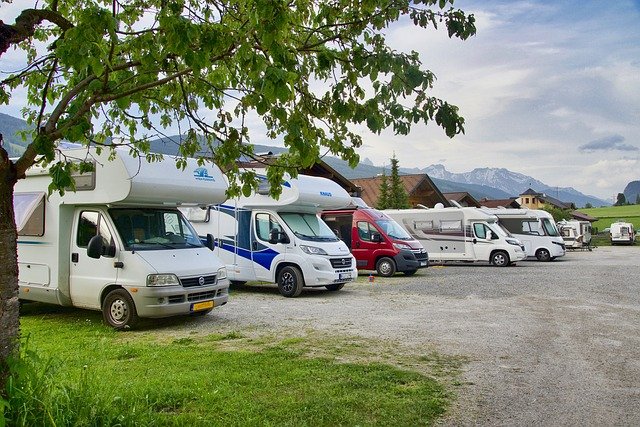Complete Guide to Outdoor Kennels: Creating a Safe and Comfortable Home for Your Dog
Outdoor kennels provide dogs with a secure space to enjoy fresh air while keeping them safely contained. Whether you're considering a temporary solution for outdoor time or a permanent housing arrangement, understanding the various options, safety requirements, and installation considerations is essential for your pet's wellbeing. From chain-link enclosures to wooden structures, each kennel type offers distinct benefits that can enhance your dog's quality of life when properly implemented.

Creating an outdoor space where your dog can safely enjoy the elements requires careful planning and consideration. Outdoor kennels serve multiple purposes, from providing temporary containment during yard work to offering a dedicated outdoor living area for dogs who spend significant time outside. The key to success lies in understanding your dog’s specific needs, your property’s characteristics, and the various kennel options available in today’s market.
Different Types and Characteristics of Outdoor Kennels
Outdoor kennels come in several distinct varieties, each designed for specific situations and dog breeds. Chain-link kennels remain the most popular choice due to their durability and visibility. These structures typically feature galvanized steel construction that resists rust and provides excellent ventilation. Wire mesh kennels offer similar benefits but with smaller openings, making them suitable for smaller breeds or puppies.
Wooden kennels provide a more aesthetically pleasing option that blends naturally with outdoor environments. Cedar and pressure-treated lumber are common materials that resist weather damage and insect infestation. Plastic and resin kennels offer lightweight alternatives that require minimal maintenance while providing adequate protection from the elements.
Modular kennel systems allow for customization and expansion as needs change. These systems typically feature interlocking panels that can be reconfigured to create different shapes and sizes. Some kennels include attached dog houses or covered areas that provide shelter from sun and precipitation.
Advantages of Outdoor Kennels
Outdoor kennels offer numerous benefits for both dogs and their owners. They provide a secure environment where dogs can exercise and play without the risk of escaping or encountering dangers like traffic or wildlife. This containment allows dogs to experience outdoor stimulation while giving owners peace of mind.
Fresh air and natural sunlight contribute to improved physical and mental health for dogs. Outdoor kennels enable dogs to engage in natural behaviors like digging, running, and exploring within a controlled environment. This can reduce destructive behaviors that might occur when dogs are confined indoors for extended periods.
For multi-dog households, outdoor kennels can provide separate spaces that prevent conflicts while allowing each dog to enjoy outdoor time. They also offer a practical solution for housing visiting dogs or providing temporary separation during training or recovery periods.
Kennel Site Selection and Layout
Proper site selection significantly impacts the success of an outdoor kennel installation. The chosen location should provide adequate drainage to prevent water accumulation during rain or snow. Slightly elevated areas or gentle slopes work best for natural water runoff.
Consider sun exposure throughout the day, ensuring the kennel receives morning sunlight while providing afternoon shade options. Trees or structures that cast shadows during the hottest parts of the day help maintain comfortable temperatures. However, avoid placing kennels directly under large trees that might drop branches or excessive debris.
Proximity to your home affects both convenience and your dog’s comfort level. Dogs often feel more secure when they can see and hear household activities. However, the kennel should be positioned away from high-traffic areas that might cause excessive excitement or stress.
Ground preparation involves removing rocks, roots, and other hazards that could injure paws or create uneven surfaces. Some owners install concrete pads for easy cleaning, while others prefer gravel or sand substrates that provide better drainage and comfort.
Safety and Health Considerations for Kennels
Safety represents the most critical aspect of outdoor kennel design and maintenance. Regular inspections should check for loose panels, sharp edges, or damaged hardware that could cause injury. Gate latches must be secure enough to prevent escapes while remaining easy for humans to operate.
Ventilation requirements vary based on climate and kennel design. Solid-walled kennels need adequate airflow to prevent overheating and maintain air quality. Even in covered kennels, proper ventilation prevents moisture buildup that can lead to health issues.
Temperature control becomes crucial in extreme weather conditions. Insulated dog houses or heated elements may be necessary in cold climates, while shade structures and cooling systems help manage hot weather. Fresh water must be available at all times, with heated bowls preventing freezing in winter.
Regular cleaning and maintenance prevent the buildup of bacteria and parasites. Removable flooring or easy-to-clean surfaces make this task more manageable. Some kennel designs include drainage systems that facilitate washing and sanitizing.
Kennel Selection and Installation Guide
Selecting the appropriate kennel size depends on your dog’s breed, size, and activity level. The enclosure should allow dogs to stand, turn around, and lie down comfortably while providing adequate space for movement and play. As a general rule, kennels should be at least four times the length of your dog and twice the width.
| Kennel Type | Provider | Cost Estimation |
|---|---|---|
| Chain-Link 6x10ft | Tractor Supply Co. | $200-400 |
| Wooden Cedar 8x12ft | Home Depot | $500-800 |
| Modular Wire Panels | Petco | $150-300 |
| Heavy-Duty Steel | Lucky Dog | $400-700 |
| Portable Fabric | Amazon Basics | $50-150 |
Prices, rates, or cost estimates mentioned in this article are based on the latest available information but may change over time. Independent research is advised before making financial decisions.
Installation requirements vary significantly between kennel types. Some portable options require minimal setup, while permanent installations may need concrete footings or ground anchors. Professional installation ensures proper assembly and compliance with local regulations, though many kennels are designed for DIY installation.
Local building codes and homeowner association rules may restrict kennel placement, size, or appearance. Check these requirements before purchasing to avoid compliance issues. Some areas require permits for permanent outdoor structures.
Outdoor kennels represent a valuable investment in your dog’s wellbeing when properly selected and maintained. By considering your specific needs, local conditions, and safety requirements, you can create an outdoor space that enhances your pet’s quality of life while providing the security and peace of mind you need as a responsible pet owner.




